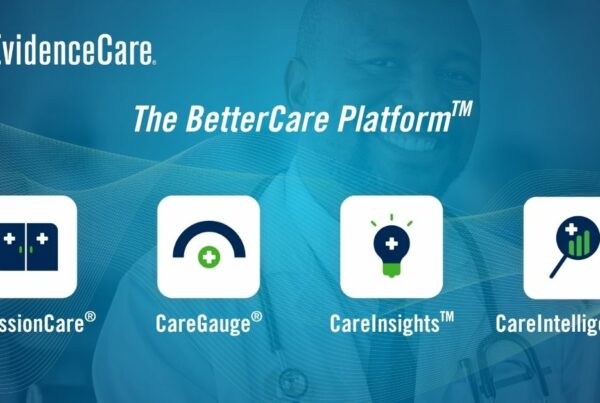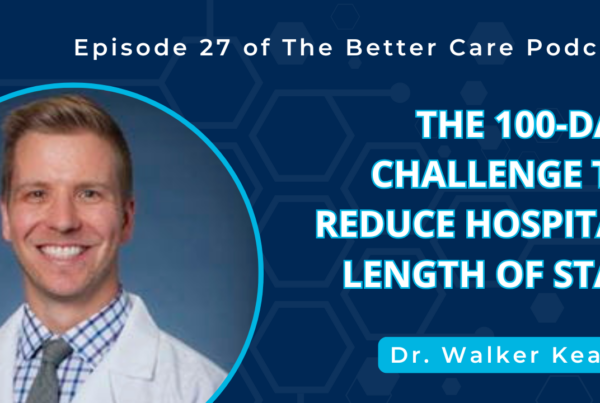The following article summarizes the conversations around health equity and social determinants of health from Episode 5 of The Better Care Podcast with Ballad Health Chief Clinical Officer, Dr. Amit Vashist, and Ochsner Health Medical Director, Dr. Granville Morse.
Some quotes have been slightly edited for brevity.
Building a Foundation of Health Equity with SDOH
Health equity and social determinants of health (SDOH) have been buzzwords in the healthcare industry for quite some time now. But for clinical leaders, these terms go beyond buzzwords and significantly impact patient outcomes.
“We have to be careful what we define as social determinants of health. I call it the ‘elephant and the six blind men’ analogy. It is a buzzword, and I hate for it to be a buzzword. It has to be in our core DNA [as a health system].” – Dr. Amit Vashist
Social determinants of health (SDOH) refer to the conditions outside of a typical healthcare environment in which people live and work that affect their health, with factors like income, education, employment, housing, transportation, and access to healthcare services being some of the many factors that can influence health outcomes.
Health equity is an industry goal that means everyone has the same chance to achieve optimal health outcomes, and no one faces barriers due to social determinants of health such as wealth, social status, or race.
“In rural America, you must have collective strategies to treat populations as a whole – addressing the underlying issues like access to healthcare, transportation, affordability, and broadband access, before you even start going to the next level that everybody’s excited about.” -Dr. Amit Vashist
Despite the industry’s awareness of the problems – and large investments in addressing those problems – there remains the need to build a foundation of health equity that addresses the underlying issues Dr. Vashist mentions. Finding clear solutions that improve access to resources and reduce health disparities based on social determinants remains challenging for healthcare providers, payers, and policymakers.
Hospital or insurance leaders must be intentional not to get distracted by the “shiny new toy” of innovation that doesn’t address root issues.
Digital Health and SDOH
Digital health already plays a significant role in addressing SDOH by enabling patients to access healthcare through telemedicine visits and healthcare professionals to monitor their patients remotely through digital monitoring tools. However, before considering digital health solutions, healthcare professionals need to map out a patient’s journey to ensure a holistic approach that considers the patient’s journey from before the moment they access traditional healthcare to the point of discharge and beyond.
Implementing digital health solutions in rural areas can be challenging due to the need for more infrastructure, such as broadband access, internet, and electricity. According to the Federal Communications Commissions, 19 million Americans lack access to broadband services. Internet access is increasingly recognized as a “super determinant” of health. Digital health innovation has little to no impact if patients don’t have the internet needed for access.
Another “super determinant” of health is transportation. Each year, 3.6 million people in the United States do not obtain medical care due to transportation issues.
“I would argue that one of the biggest social determinants of health we need to fix is transportation, but digital health can overcome that. You can argue that it’s easier to get broadband to places than to get people to places. So, if you concentrate on connecting people to transportation, you can start to improve their access to care.” – Dr. Granville Morse
Achieving Health Equity Requires All Decision Makers
Providers, payers, public health agencies, and vendors in the industry all have a role to play in addressing the ongoing SDOH issues, and the collaboration needed between parties can always be improved.
“There’s a governmental solution to some of the SDOH issues, and then some the payers aren’t touching. But if it makes sense for your institution to provide transportation, which then leads to better care, that’s great! Or provide the home monitoring equipment for free, which leads to better care, that’s great! It’s an ROI not just on money, but on patient outcomes.” – Dr. Granville Morse
Dr. Vashist points out that, while payers may not provide comprehensive support, healthcare providers can work with non-governmental and faith-based organizations, city and county health departments, and accountable care communities to address the social determinants of health. By working together, healthcare providers, payers, and public health agencies can make progress toward creating a more equitable and just healthcare system.
“It just takes a whole village. Our city and county health departments are helping us because at the end of the day, everyone agrees that unless you fix the core issues, what you are seeing in your hospitals is a manifestation of something that is bigger.” – Dr. Amit Vashist
In conclusion, it’s essential to address these social factors and find solutions that improve access to resources and reduce health disparities based on social determinants. Digital health solutions, such as telemedicine and digital monitoring tools, can play a significant role in addressing SDOH, but infrastructure challenges in rural areas are some of the highest priorities to be addressed.
Listen to the Full Episode of The Better Care Podcast, to hear Dr. Vashist and Dr. Morse share more about their experiences and health system challenges and priorities. Available now on all major podcast platforms.









